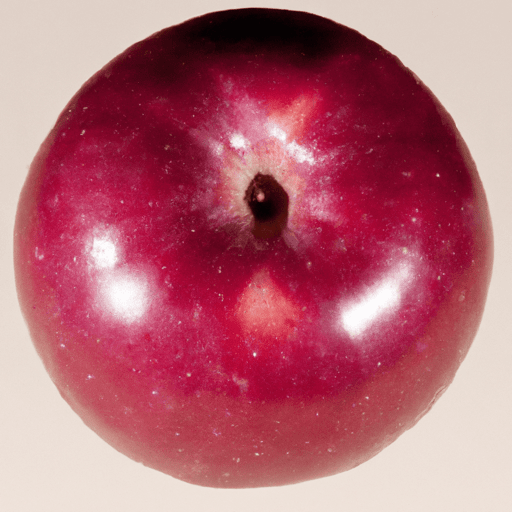The Alluring Red Apples: A Delight for the Senses
Few fruits captivate the senses quite like the red apple. With its vibrant color, crisp texture, and delightful sweetness, it’s no wonder red apples have become a staple in kitchens around the world. Whether enjoyed fresh off the tree or incorporated into a variety of recipes, these versatile fruits never fail to tantalize the taste buds. Join us as we explore the world of red apples, uncovering their culinary versatility, nutritional benefits, and interesting historical tidbits.
The Taste of Pure Bliss
Red apples boast a harmonious balance of tartness and sweetness. Each bite releases a burst of flavors that dances across the tongue, from the initial refreshing crispness to the lingering sweetness that delights long after the last bite. The complex flavor profile makes red apples suitable for a wide range of culinary applications and an excellent addition to both sweet and savory dishes.
A Culinary Chameleon
One of the greatest features of red apples is their unparalleled versatility in the kitchen. Whether adding a touch of sweetness to a savory salad or starring as the main ingredient in a luscious pie, red apples contribute flavor, texture, and visual appeal to numerous recipes. They can be sliced and enjoyed as a refreshing snack, juiced for revitalizing beverages, or blended into velvety sauces for savory entrées. The possibilities are as abundant as the apple trees themselves!
Nutritional Powerhouse
Not only do red apples tantalize the taste buds, but they also nourish the body with an array of health benefits. Packed with dietary fiber, they promote healthy digestion and assist in maintaining a feeling of fullness. Apples are also rich in vitamins A and C, essential antioxidants that support the immune system and promote overall well-being. Additionally, red apples contain natural compounds called flavonoids, known for their potential anti-inflammatory and heart-protective properties. Truly, nature’s delicious little gift houses a nutritional punch!
Apples Through the Ages
Red apples have a rich history that stretches back centuries. They hold a symbolic place in numerous myths and folklore, representing everything from knowledge and temptation to love and beauty. As one of the oldest cultivated fruits, apples have been enjoyed for thousands of years, with a multitude of apple varieties developed through careful cultivation and hybridization. The mesmerizing allure of the red apple continues to captivate both culinary enthusiasts and historians alike.
Fun Facts About Red Apples
- Did you know that there are over 7,500 apple varieties grown worldwide, many of which are vibrant shades of red?
- The saying “an apple a day keeps the doctor away” has its roots in 19th-century Wales where it originated as a proverb in its longer form: “Eat an apple on going to bed, and you’ll keep the doctor from earning his bread.”
- The heart-shaped apple is considered a symbol of love and is often associated with the Greek goddess Aphrodite.
Rediscover Red Apples
With their enticing flavor, remarkable culinary versatility, and abundant health benefits, red apples continue to reign supreme in the world of fruits. Whether you’re savoring their pure simplicity or incorporating them into your next culinary creation, these captivating fruits are sure to leave you craving for more. So why not grab a juicy red apple today and rediscover the joy it brings to your plate and palate?
Red Apples
Origins: Apples are believed to have originated in the region of present-day Kazakhstan and spread to neighboring countries over time. Red apples, specifically, can be traced back to Central Asia and Europe, where they were cultivated and enjoyed for centuries.
Common Uses: Red apples are one of the most versatile fruits, commonly used for both raw consumption and cooking. They can be enjoyed as a snack, added to salads or sandwiches, and used as an ingredient in a wide range of recipes like pies, jams, sauces, and baked goods.
Nutritional Benefits: Red apples are a good source of dietary fiber, providing about 4 grams of fiber per medium-sized apple. They are also low in calories, containing about 95 calories per medium-sized apple. Additionally, red apples are a source of vitamin C, potassium, and antioxidants.
Unique Properties: The red color of apples comes from a pigment called anthocyanin, which is found in the skin of the fruit. Anthocyanins not only give red apples their vibrant color but also have antioxidant properties that may help protect the body against damage caused by free radicals.
Historical Significance: Apples have a rich historical significance in various cultures. For example, in Greek mythology, the “Golden Apple” was a symbol of love and beauty. The biblical reference to the “forbidden fruit” is often associated with an apple, although the exact fruit is not specified. Additionally, apples have been an important part of cultural celebrations and traditions in many countries worldwide, such as apple bobbing during Halloween in some Western countries.




Use the share button below if you liked it.
It makes me smile, when I see it.